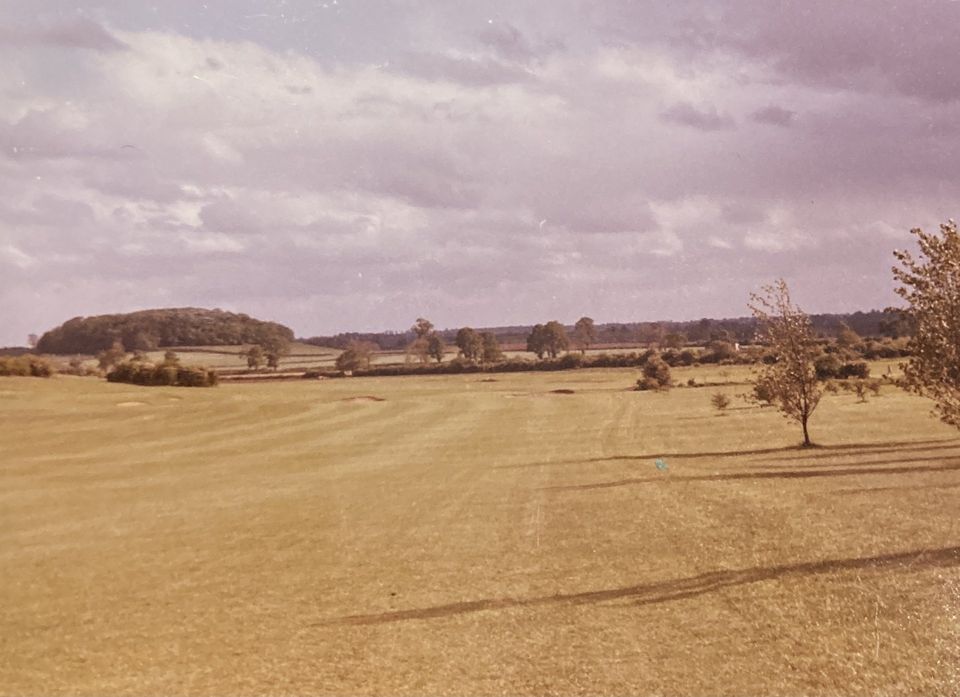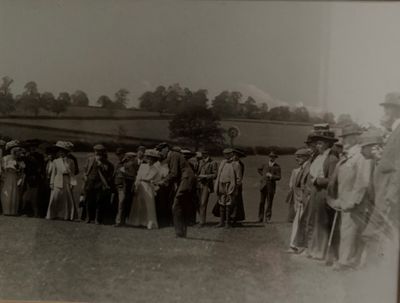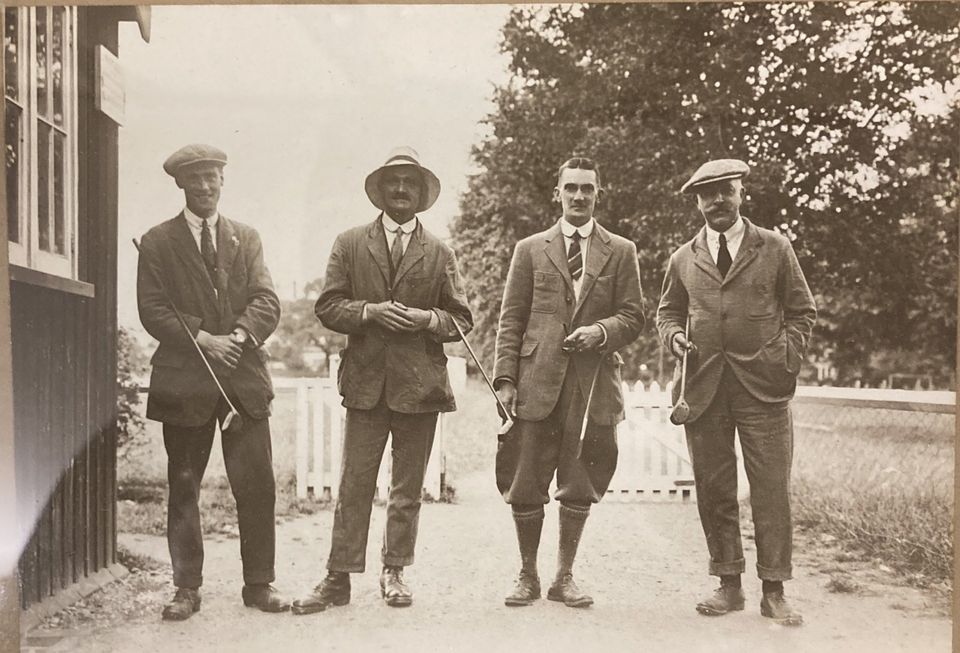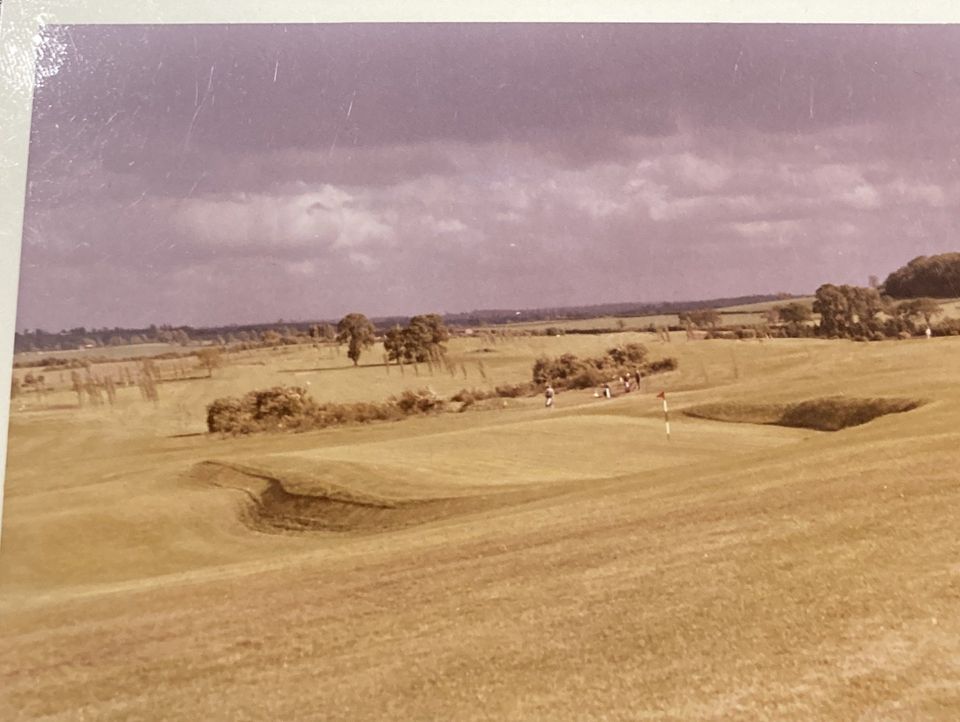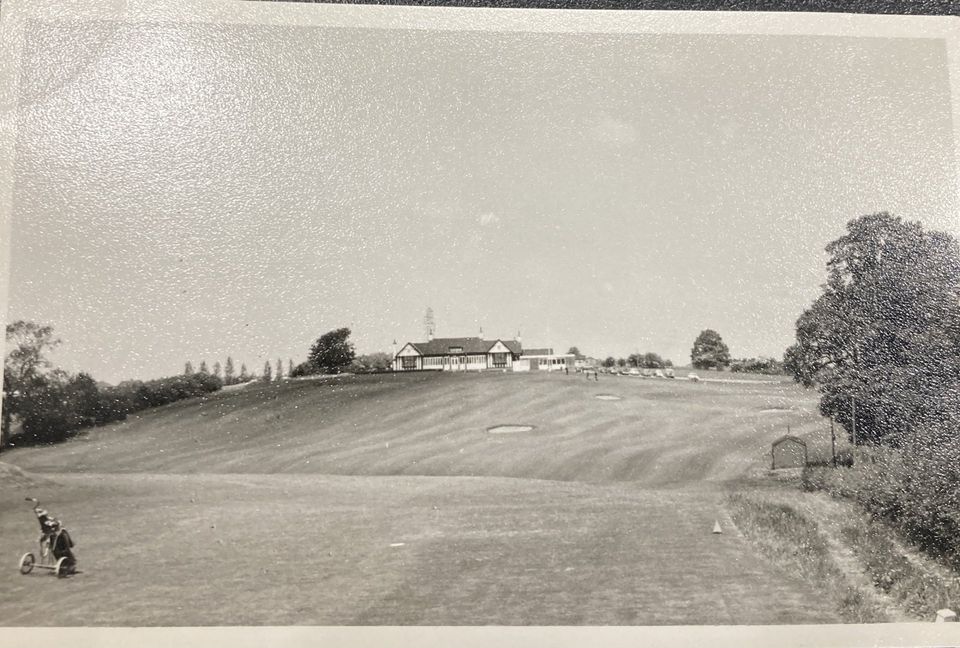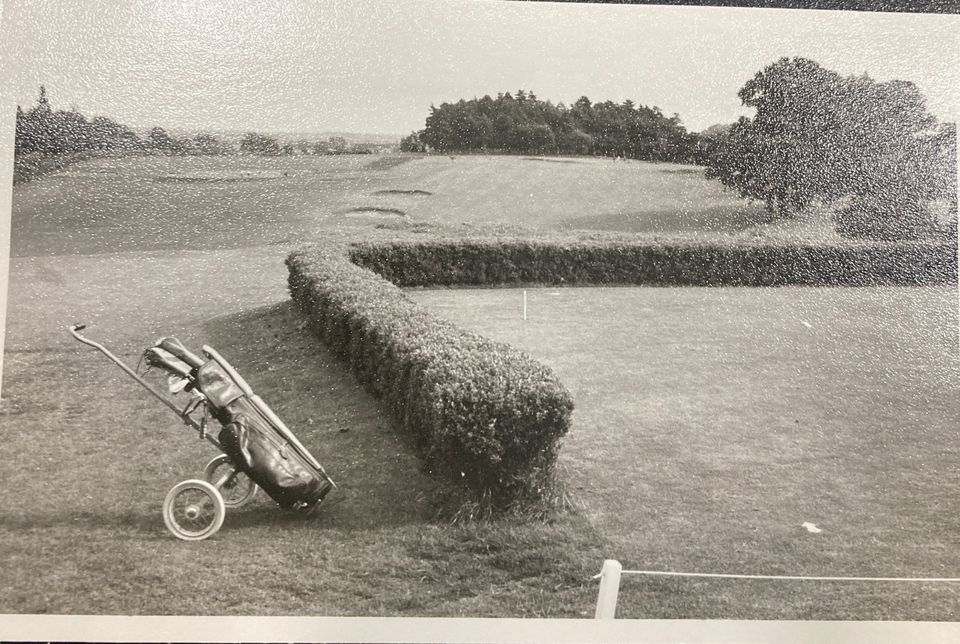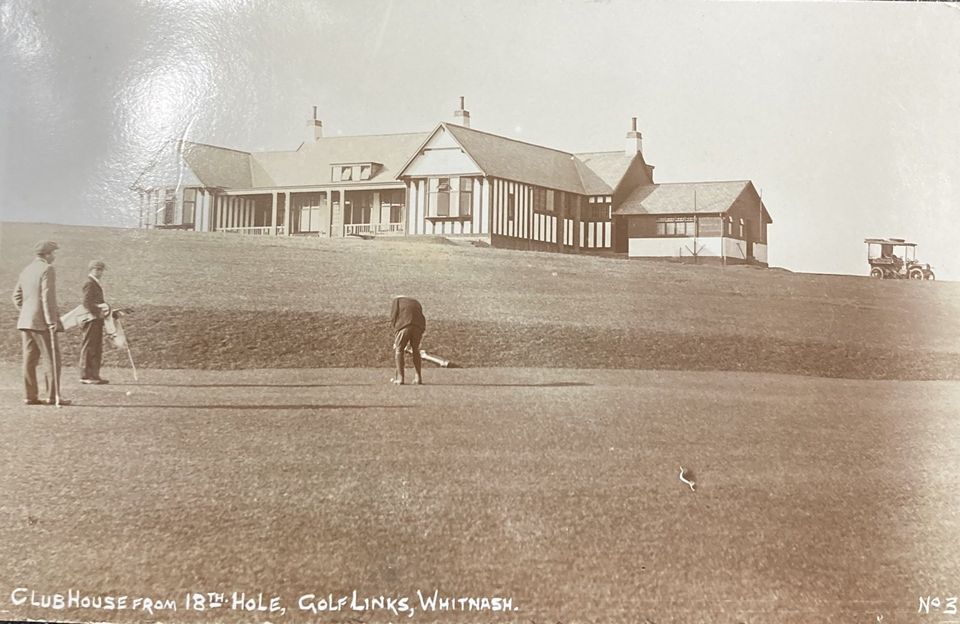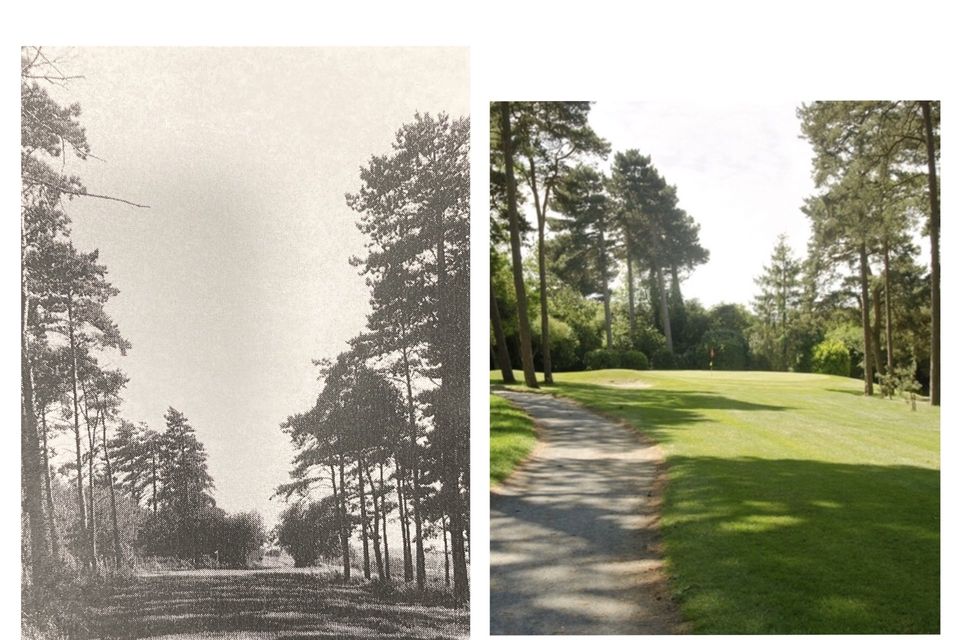- Home
- Course
- Competitions
- Visitors
- Professional
- Clubhouse
- Golf Development
- Membership
- Contact
- Safeguarding
- Professional Shop
- Indoor Academy
- The Team
- Club History
- Pro Shop Blog
- Golf During Covid 19 Blog
- Adult Group Coaching
- Monday Coaching Dates
- Junior Group Coaching
- Junior Coaching Dates
- What's On
- Enquiry Form
- Safeguarding/Policies
- Polices & Procedures
CLUB HISTORY
Golf in Leamington goes even further back in time as prior to 1890 two clubs were playing golf in the town.
The Royal Leamington Spa Golf Club and the Royal Leamington Spa Ladies Golf Club were located on the Campion Hills and Lillington Road Links respectively. Neither of these proved to be permanent abodes.
In 1904 the men moved to the Old Butts, Milverton and by 1907 some of the ladies were turning their eyes towards a new development. It was in that year that some citizens and town councillors, prompted by the desire to add a fitting amenity, formed the Leamington & County Golf Club and the new course was planned.
It was this project which caught the ladies’ interest and began the demise of their own club.
Then from the Old Butts the original men’s club, eventually known simply as Leamington Golf Club, moved in 1909 to links in Guys Cliffe Fields. There the game was played on a nine-hole course until 1930 when it increased to 18 holes. In 1935 the neighbouring Brookhurst House and grounds were purchased and the house converted into the clubhouse. The Club’s activities were halted in 1939 by the war but restarted after hostilities ended. It was in the early post-war period that some of the men, as the ladies had done earlier, sought membership of Leamington & County Golf Club.
After a relatively short-survival period Brookhurst and the course became victim of the surge in property building.
The first steps, in relation to the creation of Leamington & County Golf Club, was the convening of a meeting in Leamington Town Hall on 10th October 1907.
Supported by the judgement of Mr L Gourlay, Coventry Golf Club professional, the proposal was to obtain the lease of 80 acres of land on, the then, Shrubland Hall estate. The rent and rates would be £250 per annum and permission would be granted for the construction of proper bunkers and for play on Sundays after 2pm. Unanimous approval was given for the formation of the golf club on that site, and a provisional committee was set up to promote the scheme.
One of the first acts of the committee was the drafting of a circular with a view of raising £1000. A donation of £50 would ensure life membership, one of ten guineas would bestow membership at an annual sub of two guineas and one of five guineas bestowed annual membership at two and a half guineas.
The raising of immediate funds was imperative as the laying of the course and erecting a clubhouse was estimated at £3000.
On 23rd December 1907 the secretary reported that 112 applications for membership had been received £414 and 10 shillings had been donated and debenture commitments had reached £1560. A motion was put forward that the club be formed and this was duly carried. The name of the club was to be considered. two titles were put forward these being Leamington Priors Golf Club and Leamington & Mid-Warwickshire Golf Club.
With the steering executive committee satisfied that a golfing future was assured they carried out their last business … that of dissolving itself. So the first General Meeting of the Club assembled at the Town Hall on 6th January 1908 with Henry Hickman in the chair.
The search for a Club name was initiated by the submission of the steering committee’s recommendations. These however were withdrawn to be replaced by ‘The Leamington & District Golf Club’ which in turn was withdrawn on a further proposal of ‘Leamington & County Golf Club’ this was carried with near-unanimous support.
The first committee meeting followed immediately and elected Gordon Bland to the chair and appointed the Greens, Finance and House committees and authorised the drawing-up of rules for the Club.
In June the Warwickshire Union of Golf Clubs invited the club to take up membership and this was accepted as from 1st January 1909.
As membership numbers began to grow there was much confidence that the maximum of 500, set out in the Articles of Association, would be reached.
A visual identity was deemed essential so design for a Club badge was sought. The accepted design acknowledged that the Club was in the ecclesiastical parish of St Margaret’s Whitnash, by showing the Saint in conflict with a dragon.
With sights now firmly set on the construction of the course expert advice was secured in the shape of Willie Park (Jnr), the first of the businessmen professionals of the day, twice winner of The Open Championship and a designer and course constructor.
His report was unfavourable towards the Shrublands Hall Estate and he found Mollington Hill land far superior and recommended the construction of an eighteen hole course of about 6,200 yards plus a ladies course of nine holes. Negotiations for the land proceeded and agreement reached for the lease of 194 acres for 21 years at 17/6d. an acre (87 pence as we know it today).
Park’s assessment of Mollington Hill’s potentialities may have been first-class but his fees of one hundred guineas and ten per cent on the outlay for planning the course and overseeing the layout were too high for the Committee. Mr Colt of Sunningdale Golf Club and Jack White, professional at the same Club and 1904 Open Champion, were approached and terms agreed for laying out the course at just five guineas a day, plus expenses.
No time was wasted, a plan of the course was printed and circulated to the members and work went ahead. Greens and tees were built with much of the work being done by voluntary labour. Progress accelerated throughout the summer of 1908 and by September the first six holes out and the three last inward holes were almost completed.
The formal opening would not take place until all eighteen holes were ready, but the committee felt it politic to decide that ‘The nine holes that have been prepared be available for use of members on and after 1st October until further notice’.
Four months later the first Annual General Meeting of the Club a report showed that expenditure on the construction of the course amounted to £1,780.
Second only in importance to the creation of the course was the building of the Clubhouse and supply of services to support the facilities. The speed at which those tasks were accomplished in parallel to all the others was quite staggering. For in just eight months from the first committee meeting held in January the Clubhouse was built and in service by the end of September 1908.
Since January 1909 the Committee had been planning the official opening of the course. The Opening Meeting was finally arranged for Thursday 20th May continuing through the 21st, 22nd and 24th and ending on Tuesday 25th.
James Braid, the Open Champion, and Harry Vardon, the ex-Open Champion, had agreed to play exhibition matches and would be joined by two others, professionals Fred Robson, sixth to Braid in the 1908 Open and George Duncan, fifth in the 1907 Open. The Meeting would also include the Open Amateur Competition for the Leamington Town Bowl and a series of competitions for men and lady members.
As for the proposed Ladies Course the men of Leamington and County took little time to decide that for the good of the Club and peace generally, the ladies should use the men’s course and be consulted on the positioning of their tees.
The intention and drive of the ladies was quickly apparent when the opportunity to advance presented itself. They held their first General Meeting in the Town Hall on the 18th March 1909. Soon they were as established as the men playing their own competitions and inter-Club matches and supplying representatives in the County Ladies team. In 1910 they joined the Ladies Golf Union.
The outbreak of World War I and the immediate post war period was a difficult time for the club. In 1916, for instance, some of the Club’s horses were commandeered by the Army, six holes were closed, the professional left and the Clubhouse needed to be further insured against damage by the emerging threat – airships.
A month after the cessation of hostilities in 1918 the Committee was recommending the overhauling of the twelve holes kept in play and the re-opening of the six holes closed for two years.
The worst winter conditions on record were experienced in 1925, but a new lease of the course for 21 years was signed and the Spring of 1926 found the course and greens in excellent condition.
If the weather of 1925 and then 1931 were bad enough to prevent Saturday or Sunday play 1932 showed no sign of improvement. There was extensive flooding throughout the country in May of ’32 resulting in diminishing income. To offset this the Ladies organised bridge parties enabling Club facilities and furnishings to be improved. An interesting occurrence in the year was the appointment of F.T. Summer, assistant professional for four and a half years at Leamington and County, to the post of professional at the newly-opened Gulliman’s Golf Course in Tachbrook Road.
A new Amateur Record for the course was set in 1934 by Mr Buckley, a well-known Midland golfer, who played a round of 71. The excellent score prompted, that July, for Mr Colt, the course architect be asked to inspect and make adjustments and alterations to improve the course and work begun that winter.
The Second World War did not affect the Club greatly at first but in view of unrest the Club thought it fit to let 57 acres at the far end of the course for grazing. Nearby greens and bunkers were fenced off for protection. Times were difficult and naturally membership decreased and expenses needed to be reduced but in 1942 there was some improvement in circumstances for the Club as some members of the Milverton Club were welcomed in joining Leamington & County. As the War dragged on more acreage was lost to ploughing which reduced the holes in play to eleven.
As in 1919, so in 1945, release from the immediate cares of war encouraged members to assess the position and seek to re-establish the domestic and playing facilities of the Club. A move giving reality and confidence to such thoughts came with the securing of the land on which the Clubhouse was standing, it was purchased for £600.
With the war over and the Clubhouse secured, the course once more became the focus of attention. The lease was renewed as from the 25th December 1946 for 21 years with the option to terminate after seven years. This option was deemed necessary because of the possible difficulties in repossessing land for the rebuilding of the course. It was recommended that Mr F.W. Hawtree a leading course architect be engaged to advise on the future of the course. He came to the Club and submitted a report and presented a plan for a new layout.
His plan envisaged the re-designing to create two loops of nine holes. The scheme was not tackled immediately but repairs to tees and bunkers were put in hand, and enquiries made regarding the purchase of a triangular plot of land next to the Clubhouse plot. This would ultimately accommodate the ninth green. Meanwhile only eleven holes continued to be playable.
Along with plans for the course, schemes were thought up to alter the Clubhouse, these visions included a new men’s lounge. Gas was replaced by electricity for added amenity and economy. The professional was provided with a new shop.
Early in 1950 notice of resignation was received from Tom Green who had given considerate and worthy service to the Club as professional and course supervisor. It was agreed to seek the services of one Derek Ratty, then assistant professional at Hearsall. This proved to be the beginning of a long association.
The long awaited official opening of the new course came on 18th October 1953, the first competitions for the newly presented Presidents Vases were played during that month.
The updated course deserved up-to-date treatment. The need to bring water to the greens was deemed essential and after much consultation and fund raising the official turning on of the taps was in the Spring of 1958.
The year 1958 held other significance for the Club, it was the Golden Jubilee year. A new idea surfaced toward the end of that momentous year. It was to create a new 11th hole through the woods at the top of Mollington Hill. Work on this new project did not commence until 1960 with designing and clearing of trees. Construction of the tee, the green and bunkers and by September 1965 construction and seeding had been completed and the period of maturing had begun.
The hole was brought into general play in 1968.
An Exhibition Golf Show was another highlight of ’68, the opening interest and attention centred on Dai Rees and his Golf Clinic. How to do it and how not to with demonstrations of common faults and extreme hooks and slices, mixed with professional banter and Welsh fervour, set the scene for the main event.
This was an England versus Wales four ball encounter, the contestants being Peter Allis and Bernard Hunt, Dai Rees and Dave Thomas. Dave Thomas was in great form producing some of the massively long drives he was renowned for. His eagle three at the 550 yard fourteenth was just one highlight of his six under par 66, setting the new professional course record.
The honours for the day went the way of the Welsh duo.
Derek Ratty’s service as club professional was recognised and appreciated on completing 25 years and on his resignation in 1977.
The quest for ownership of the course began as early as 1960 but circumstance and negotiation too often was not ideal and had broken down. Hope were raised again in 1976 when the Club were offered the chance to purchase the freehold of the course and some adjacent land.
Things dragged on for a variety of reasons into 1980 when another offer was made to the Club for consideration of purchase of the course but excluding Mollington Hill Farm and adjoining land previously offered. The offer was for £110,000 with a first option on the other two items.
In November 1981 a contract was signed for the course at £87,863 with costs, the area was reduced to 117 acres. Completion was made in February 1982.
With the outlay on the land facing the Club, the means of raising the capital was a primary concern. A scheme was put to the members whereby a one-off payment or instalments over 10 years by each one would ensure the required finances would be raised.
Little time passed before Mollington Hill Farmhouse also came up for sale. This purchase was completed in March 1983 for the sum of £57,800.
With the knowledge that the course ownership was secured for the future a very ambitious and extensive programme of drainage work was initiated across much of the course at a cost of £14,000.
Further modernisation and re-designing of the Clubhouse has occurred in more recent times and provides extensive facilities in terms of lounge, bar and dining, together with extended and improved changing and locker rooms.
To plan for the Club’s Centenary Year a special sub-committee was formed with the purpose of raising funds, planning for events and the developing/building of at least one commemorating structure.
A new entrance wall has been built and was officially opened on Thursday 14th February 2008, exactly 100 years to the date when the first sod of earth was turned to commence the construction of the original course.
The long term future, prosperity and development of the Club may largely be in the hands of the children and grandchildren of present members just the same way that junior golf has played its part in past years.
As long ago as 1917 school boys and girls were encouraged to take up the game and the Club has produced many competent golfers from the junior ranks. Carolyn Gater and Linda Voss both enjoyed success in the 1960’s. Linda went on to captain a very successful St. Andrew’s University Ladies Team.
Pip Elson, commenced his golfing career at Leamington & County before becoming a prominent tour professional in the 70’s and 80’s.
Tracy Hammond joined the club at 12 years of age developed her game at county amateur level and higher - winning the St Rule Trophy on the Old Course at St Andrews in 1986 - before plying her skills on the European Ladies Tour full time from 1988 to 1996. Tracy has since returned to amateur golf and re-joined the Club. In 2005 she added a sixth Warwickshire Ladies Title to her list of honours.
James Cook and Warren Bladon both developed in the Club’s junior section becoming formidable players in the Club’s successful Mid-Warwickshire League Team.
Cook won the British Boys Amateur Championship in 1985, and the British youths in 1987, was captain of the English Boys International Team and in 1988. He qualified to play in The Open at Royal Lytham. Two steady rounds of 77 & 76 failed by 5 shots to make the final two rounds. He qualified to play in The Open again in 1993, this time as a professional at Royal St George’s rounds of 71, 71, 74 and 72 were good enough to earn him £3675.
Bladon won arguably the biggest prize in amateur golf when he became British Amateur Champion in 1996. This provided him with automatic entry into The Open that year at Royal Lytham followed by place at The Augusta National course for the 1997 US Masters. At Lytham Bladon recorded 73, 73 but missed the cut by 3 shots. A certain Mr T Woods was in The Open field, still an amateur, he was 3 under par and tied for 22nd place at the finish.
Bladon now a professional golfer also qualified for the 2006 Open played at Royal Liverpool, Hoylake.
